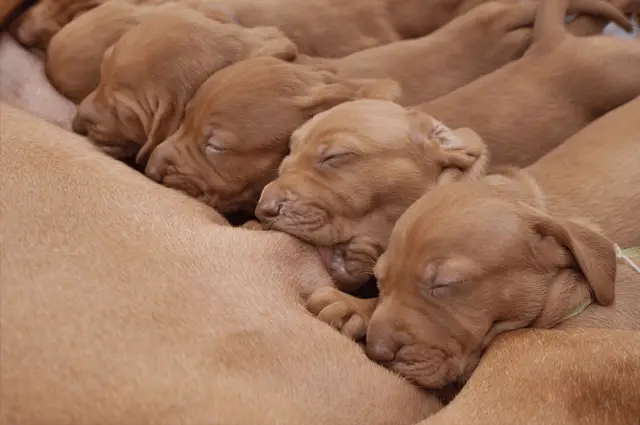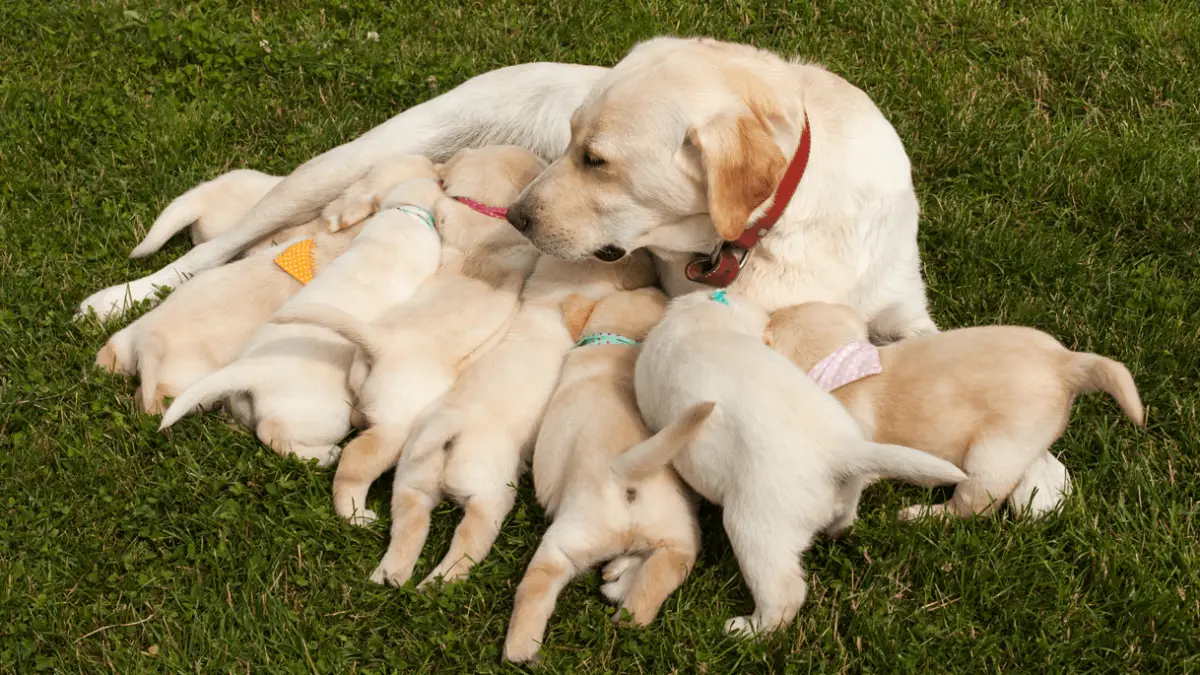How Dangerous Is Mastitis in Dogs
28.01.2021.
When new puppies arrive at home, you can be sure there is plenty of fun times coming. Is there anything better than spending time watching your dog taking care of her puppies? Playing with one puppy is one of the best feelings in the world, let alone a couple of them. Of course, that is, if everything goes well with whelping.
All nursing mammals can encounter certain problems during and after birth, and mastitis is one of them. This painful and uncomfortable problem might not be as common in dogs as in other species, but it should be taken care of as soon as it is noticed. For the sake of the health of nursing moms and their puppies, their owners should know how to spot mastitis in dogs and what to do about it.
What is mastitis in dogs?
Mastitis is a painful infection of the mammary glands, which can, of course, only affect nursing female dogs. Usually, mastitis is a bacterial infection, but it can also be a fungal infection.
This is not the most common thing to affect dogs as a species, but it is incredibly uncomfortable and painful when it does happen. It can be localized, but it can quickly become an abscess in the affected glands if left untreated. If that happens, there can be fatal consequences.
There is a common problem with dogs that involves the development of their hips. Here is an article that can tell you more about it - Hip Dysplasia In Dogs.
What causes mastitis?
Most commonly, mastitis is caused by bacteria. This inflammation usually happens after the birth of puppies and when they start nursing. The orifices of the teats remain open longer, especially when it comes to large litter nursing, and it opens the chance for bacteria to enter the mammary glands.

Bacteria causes mastitis in most cases, but it is also possible that mastitis is caused by yeast infection. The three most common mastitis-causing bacteria are:
- Staphylococcus
- Streptococcus
- Escherichia coli
How to prevent mastitis in dogs?
No matter how experienced the mother is or how large the litter is, the nursing dog can get affected by mastitis. The truth is that even despite your best efforts, bacteria can still infect your dog and cause this uncomfortable infection. However, there are some things you could do for your dog to help prevent the development of mastitis.
1. Keep the environment clean
The immediate environment must be kept clean and dry. The place where puppies are confined should be frequently cleaned to prevent bacteria from infecting the nursing mom. Also, the bedding should be changed and washed often.
2. Trim puppies’ nails
This might seem weird advice, but puppies’ nails can make tiny scratches, paving the way for bacterial infections. Make sure you trim their nails as short as possible so they don’t accidentally scratch their mom.
3. Keep track of nursing
Make sure that all glands are used. This is usually not a problem when bitches have large litters, but you should ensure that all glands are being used with smaller litters.
Pain meds are usually prescribed for dogs with mastitis. Here is what you need to know about pain meds for dogs - Pain Relief for Dogs.
Symptoms
If you follow all of the abovementioned measures, it is unlikely that your dog will be affected by mastitis, but if it still somehow happens, there are signs and symptoms you should look out for.
1. Early symptoms
Catching the early signs of mastitis is not that easy. There are only subtle symptoms that are not always clear. The first sign is that the nursing puppies are not gaining enough weight. The second sign might be a slight inflammation, redness, or swelling in the affected area.
2. Development symptoms
As this infection progresses, the symptoms will become more apparent. The infected gland will be somewhat swollen and red or purple. The dog should feel quite a bit of pain from the infected gland. It can also become ulcerated and have scabs on it. The milk extracted from the infected gland will be thickened and contain pus or blood.
3. Severe symptoms
This is the worst-case scenario, and the health of a nursing bitch will be visibly declining. The dog can appear lethargic and can refuse to eat. They may have diarrhea or start vomiting. The infected gland will be dark in color, and the tissue might begin to die out because of the lack of blood supply.
What is a diagnosis?
Luckily, vets are our allies, and the medicine is so developed that they can quickly diagnose mastitis in dogs. There are three sure ways to diagnose this painful infection.
Blood cell count
The presence of white blood cells in your dog’s blood will indicate an infection. It can help the vet diagnose the severity of the mastitis infection.
Milk cytology
A small milk sample is extracted from the affected gland and tested under the microscope. If there are bacteria or white blood cells present, the mastitis in dogs is confirmed.
Bacterial culture
Your vet might ask for bacterial culture if the usual broad-spectrum antibiotics are not working. Another milk sample will be taken to a lab where the bacteria will be isolated, and a more precise antibiotic will be prescribed.
One of the most popular pain meds for dogs is called Meloxicam. Here is what you should know about it - Meloxicam For Dogs.
How to treat mastitis in dogs?
Most nursing bitches are treated with broad-spectrum antibiotics and pain meds. That is usually the best possible option because it allows the dog to remain at home with puppies. However, your vet might suggest other things as well. Some of these things are milking the affected gland by hand, decreasing the pressure, and increasing the blood and milk flow.
One popular remedy is cabbage patches. For centuries, cabbage has been used to ease mastitis in different species, and humans are one of them. Cabbage patches should be fitted to the affected gland and kept there for 2-4 hours. After the patch is removed, puppies should nurse from the affected gland. That will promote blood and milk flow and speed up the healing process.
World Dog Finder team








Share